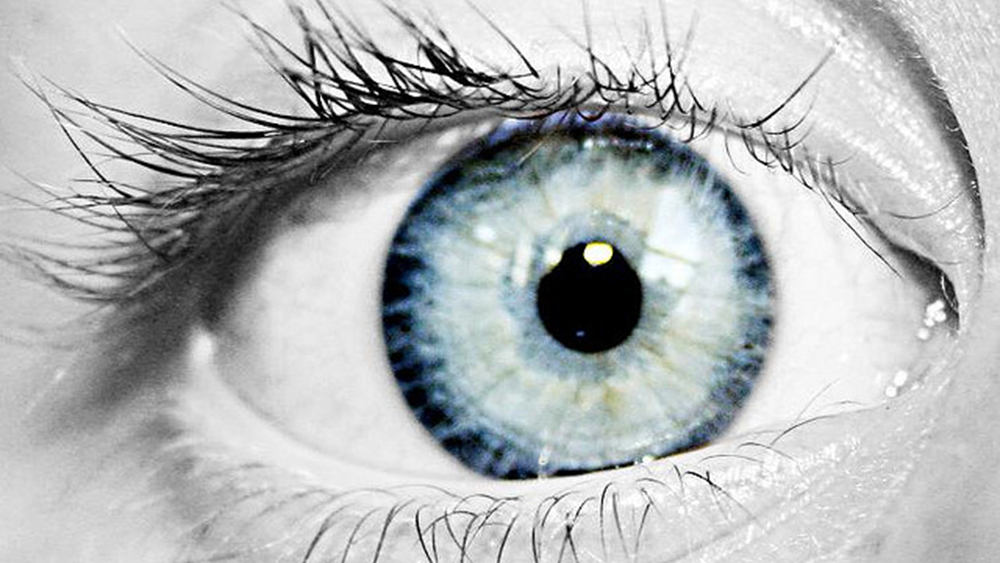
This week we've discovered two possible elixirs of youth, the secret to being more attractive to the opposite sex, and a back-pain breakthrough that could cure your aching back simply and cheaply. And if that wasn't enough we can now change the colour of your eyes by simply blasting them with lasers. All that and more in another exciting Week in Science.
We can now change your eye colour with lasers - Do you have brown eyes? Do you wish you could have bright blue eyes instead? Well, now you can, thanks to a novel laser therapy developed by a cosmetic surgeon. In a 20 second procedure, the eye is blasted with a laser targeting the iris and stopping the pigment cells from producing their brown colouring. Underneath the brown pigment is a natural blue colour, which is revealed once all the pigment has been neutralised, which takes around two weeks of treatments. The procedure is currently undergoing a larger pilot, having successfully completed clinical trials, and should be available for general consumers within the next year or so. It should cost in the region of $5,000, so it won't cost the Earth. [Stroma, Yahoo]
Holding a guitar makes you more attractive - A recent French study has backed up data from an Israeli one last year, concluding that men holding a guitar are more attractive to young women. The French study pitted a man holding either a guitar bag, a sports bag, or nothing against 300 women in the street aged 18 to 22. Of those asked, 31 per cent gave the actor their number when he was holding the guitar bag, but only 14 per cent did the same when he was holding nothing, and just 9 per cent when he was clutching a sports bag. The theory is that music plays a strong role in sexual selection, but it seems you don't need to actually be able play the guitar, only hold one, so there's hope for us all. [Phycology of Music]

A bat's tongue splurges with erect bristles - Bats feeding from flowers have to do so rapidly, and normally in mid-flight, simply because the flowers can't take their weight. To do so, scientists have discovered that a bat's tongue has expandable bristles that balloon when filled with blood, sticking out like the bristles of a brush. As the bat sticks its tongue deep into the flower, muscles along the centre compress the tissue, forcing the blood into the hair-like nubs that stick out from the tip. The prongs then scoop up the nectar much faster, enabling the bat to feed quickly and fly on, as shown in the video below. Apparently the development could be used to inspire new surgical tools that start floppy and become rigid when in place within the needed area of the body. [ScienceNews]
Back pain can be fixed with just antibiotics - Researchers have discovered that up to 40 per cent of back pain is actually caused by bacterial infection, meaning treatment with antibiotics can prevent the need for costly and invasive surgery. A Danish team working with researchers in Birmingham discovered that chronic lower back pain can be caused by Propionibacterium acnes, a bacterium commonly known to cause acne. They also found that a 100-day course of antibiotics could eradicate the bacteria sitting in the lower vertebrae and relieve the pain. Unfortunately it won't cure all back pain, leaving those suffering from acute pain out of luck, but for the thousands crippled by chronic lower back pain, a cheap course of antibiotics could cure them and enable them to return to a normal life. [The Guardian]

We could soon replace our teeth by simply growing new ones - Current modern dentistry isn't all that modern. If you lose a tooth you'll have to get an implant, which is essentially a peg screwed into your jaw. But now researchers are looking at growing new teeth, right in your gum. Bioengineered teeth start life as small balls of stem cells, or teeth primordia, transplanted into the gum where they develop as full adult teeth. Currently the biggest obstacle to the viability of this kind of procedure is that of obtaining enough tooth stem cells, which are primarily found in human embryos. However, recent work has been made into taking human gum epithelial cells and combining them with other types of stem cells to create the primordia cells needed for implant. Soon we could be swapping teeth out instead of drilling into them. [Science World Report]
Sign up for breaking news, reviews, opinion, top tech deals, and more.